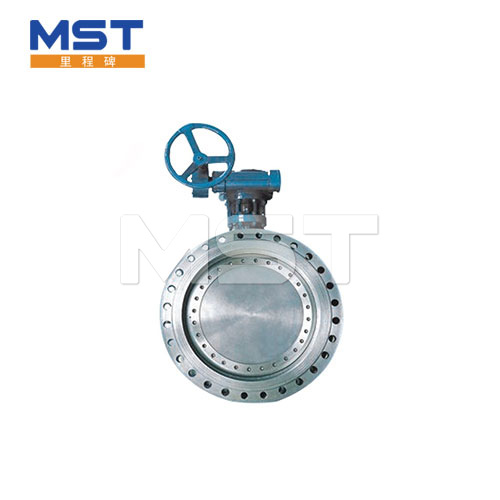 English
English Español
Español  Português
Português  русский
русский  Français
Français  日本語
日本語  Deutsch
Deutsch  tiếng Việt
tiếng Việt  Italiano
Italiano  Nederlands
Nederlands  ภาษาไทย
ภาษาไทย  Polski
Polski  한국어
한국어  Svenska
Svenska  magyar
magyar  Malay
Malay  বাংলা ভাষার
বাংলা ভাষার  Dansk
Dansk  Suomi
Suomi  हिन्दी
हिन्दी  Pilipino
Pilipino  Türkçe
Türkçe  Gaeilge
Gaeilge  العربية
العربية  Indonesia
Indonesia  Norsk
Norsk  تمل
تمل  český
český  ελληνικά
ελληνικά  український
український  Javanese
Javanese  فارسی
فارسی  தமிழ்
தமிழ்  తెలుగు
తెలుగు  नेपाली
नेपाली  Burmese
Burmese  български
български  ລາວ
ລາວ  Latine
Latine  Қазақша
Қазақша  Euskal
Euskal  Azərbaycan
Azərbaycan  Slovenský jazyk
Slovenský jazyk  Македонски
Македонски  Lietuvos
Lietuvos  Eesti Keel
Eesti Keel  Română
Română  Slovenski
Slovenski  मराठी
मराठी  Srpski језик
Srpski језик
The structure of flange butterfly valve
2023-09-19
The structure of flange butterfly valve
The sealing structure of the butterfly valve includes a metal-to-metal hard seal and a metal-to-rubber or plastic soft seal. The sealing ring can be placed on the butterfly plate or on the valve body. This article details the structure of the sealed butterfly valve.
Depending on the placement of the butterfly plate in the valve, butterfly valves can be made into centrally symmetrical (I type), called imported centerline butterfly valves, offset (H type) (single eccentric, double eccentric and triple eccentric, respectively called imported single eccentric Butterfly valve, double eccentric butterfly valve, triple eccentric butterfly valve) or variable eccentric butterfly valve.
The sealing structure forms of butterfly valves include: single eccentric seal, double eccentric seal, triple eccentric seal, variable eccentric seal. The sealing principles of various structural types of butterfly valves are briefly described as follows:
(1) Center line butterfly valve
For a centerline butterfly valve, the axis of the valve stem is in the same plane as the center plane of the butterfly plate and perpendicularly intersects with the center line of the valve body pipeline, and the areas on both sides of the butterfly plate are symmetrical to the axis of the valve stem. Centerline butterfly valves are generally made in the form of rubber lining. Due to their simple structure, centrally symmetrical (type I) two-way sealing effect is the same, and the flow resistance is small, and the switching torque is also small. Therefore, they are widely used in medium and small butterfly valves. However, because the shaft head is often in a state of friction, it wears faster than other parts and is prone to leakage here. Therefore, in rubber-lined butterfly valves, the shaft head is sometimes lined with a PTFE film to reduce friction or add a spring to compensate for wear. Obviously, if the centerline type is made of metal to metal, it will be difficult to seal. There is no friction on the shaft head of the inclined plate and offset plate butterfly valves, but their flow resistance and sealing torque are larger than those of the central symmetrical butterfly plate. Conventional butterfly valves for VTON water generally adopt a centerline structure.
2. Sealing principle of single eccentric seal butterfly valve
Since the rotation center of the butterfly plate (i.e., the center of the valve shaft) and the center line of the valve body are offset in size based on the single eccentric butterfly valve, during the opening process of the butterfly valve, the sealing surface of the butterfly plate will seal faster than that of the single eccentric sealing butterfly valve. When the butterfly plate is separated from the valve seat sealing surface and rotates to 8°~12°, the butterfly plate sealing surface is completely separated from the valve seat seal. When fully opened, a larger gap is formed between the two sealing surfaces. The design of this type of butterfly valve greatly The mechanical wear and crowding pressure deformation between the two sealing surfaces are reduced, which improves the sealing performance of the butterfly valve.
3. Sealing principle of double eccentric seal butterfly valve
Since the center line of the valve seat and the center line of the valve body form a β angle offset on the basis of the double eccentric butterfly valve, during the opening process of the butterfly valve, the sealing surface of the butterfly plate immediately separates from the valve seat sealing surface at the moment of opening, and It will only contact and compress the valve seat sealing surface at the moment of closing. When fully open, a gap is formed between the two sealing surfaces that is the same as a double eccentric seal butterfly valve. The design of this type of butterfly valve completely eliminates mechanical wear and scratches between the two sealing surfaces, improving the sealing performance and service life of the butterfly valve. have been greatly improved. VTON hard-sealed butterfly valves, wafer-type hard-sealed butterfly valves, and welded butterfly valves generally adopt a double eccentric structure.
4. Triple eccentric butterfly valve
The triple eccentric butterfly valve rotates the positive cone angle by an angle to an oblique cone angle, so that the eccentricity e can be reduced and the opening torque is also reduced. Of course, this is just an intuitive understanding. Where should the actual axis be set? Or should three-dimensional motion analysis be used to determine whether the seal pair will interfere. It is worth pointing out that the sealing ring of the triple eccentric butterfly valve can not only be designed as a multi-layered type, but also can be made into a U-shaped or O-ring like Neles. In some cases, it can even be made of non-metallic materials such as rubber and PTFE. It is questionable whether it is necessary to make elastic sealing materials triple eccentric (double eccentric is enough).
5. Sealing principle of variable eccentric sealing butterfly valve
The unique feature of the variable eccentric butterfly valve is that the valve stem shaft on which the butterfly plate is installed is a three-section shaft structure. The two shaft sections of this three-section shaft valve stem are concentric, and the center line of the central section shaft is offset from the axes at both ends by a center distance. , the butterfly plate is installed on the intermediate shaft section. Such an eccentric structure makes the butterfly plate become double eccentric when it is in the fully open position, and becomes single eccentric when the butterfly plate rotates to the closed position. Due to the effect of the eccentric shaft, when it is close to closing, the butterfly plate moves a certain distance into the sealing cone surface of the valve seat, and the sealing surface of the butterfly plate and the valve seat matches to achieve reliable sealing performance.
Since the rotation center of the butterfly plate (i.e. the center of the valve axis) and the sealing section of the butterfly plate are set eccentrically, during the opening process of the butterfly valve, the sealing surface of the butterfly plate gradually separates from the sealing surface of the valve seat. When the butterfly plate rotates to 20°~25°, The sealing surface of the butterfly plate is completely separated from the sealing surface of the valve seat. When it is fully opened, a gap is formed between the two sealing surfaces, which greatly reduces the relative mechanical wear and extrusion between the two sealing surfaces during the opening and closing process of the butterfly valve, thereby ensuring Butterfly valve seal.





